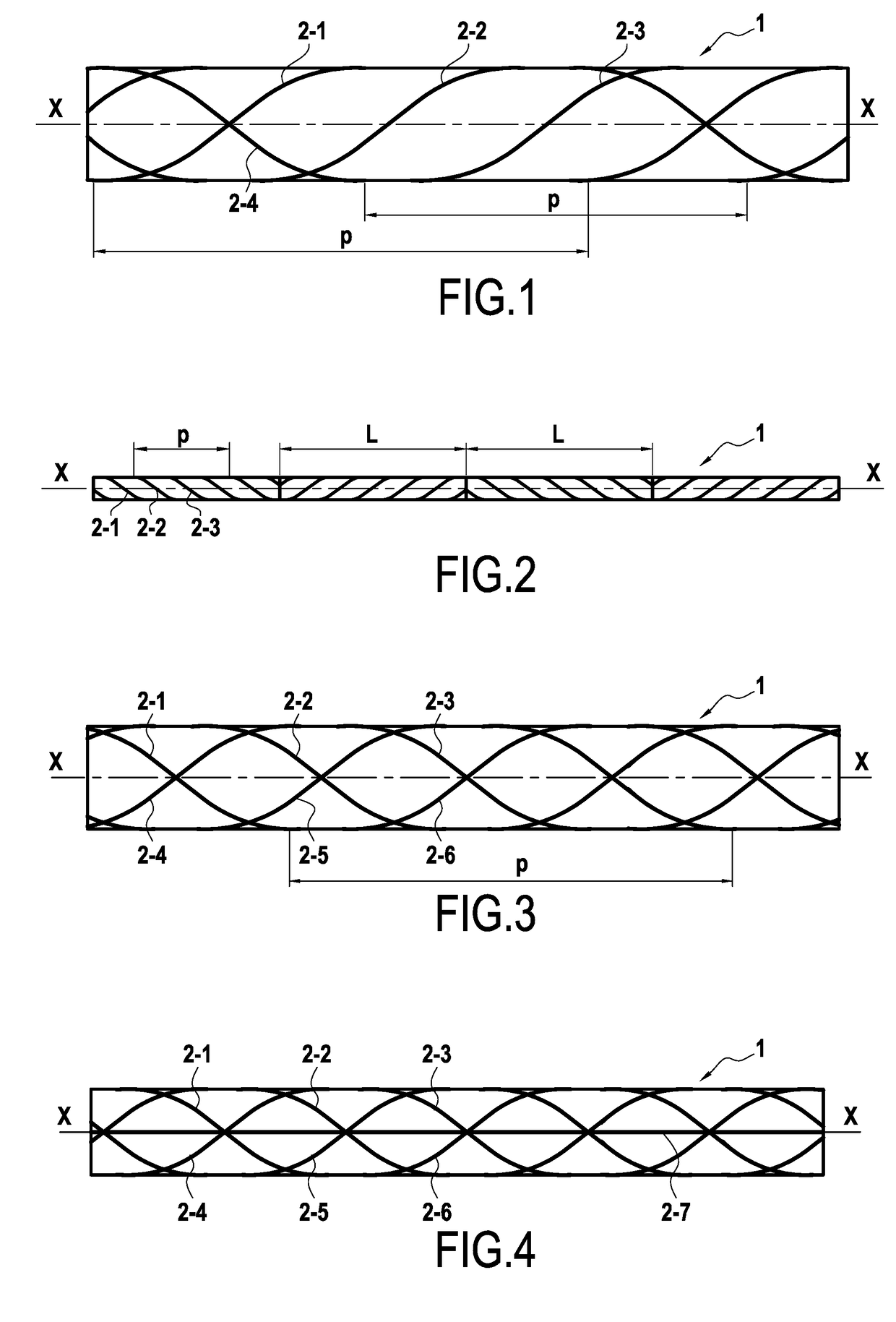Method Of Determining Stress Variations Over Time In An Undersea Pipe For Transporting Fluids
a technology of stress variation and undersea pipe, which is applied in the field of pipes, can solve the problems of limited measurement and complex implementation, and achieve the effect of improving accuracy, more accurately and more rigorously performed
- Summary
- Abstract
- Description
- Claims
- Application Information
AI Technical Summary
Benefits of technology
Problems solved by technology
Method used
Image
Examples
first embodiment
[0074]In a first embodiment shown in FIG. 1, the distributed optical fiber sensors 2-1 to 2-4 are advantageously arranged helically around the longitudinal axis X-X of the pipe 1, thereby improving their mechanical adhesion on the pipe.
[0075]In this embodiment, the optical fiber sensors 2-1 to 2-3 are positioned helically at the same pitch p, and the respective initial angular positions of those helices are offset from one another by 2 π / 3. The fourth optical fiber sensor 2-4 is positioned helically with the same pitch p but in the opposite direction to the optical fiber sensors 2-1 to 2-3, and starting from an arbitrary initial angular position.
[0076]In practice, with this helical configuration, in order to determine the stress and fatigue states of the pipe at all points of the pipe, it is necessary to know the helical positions of the optical fiber sensors 2-1 to 2-4, which positions are described by using the curvilinear abscissa given by the following equation (already mentione...
third embodiment
[0082]In a third embodiment, it is possible to measure the deformation elements u′2−r3=0 and u′3+r2=0 by adding two additional optical fiber sensors 2-5 and 2-6.
[0083]The configuration shown in FIG. 3 is an example making it possible to measure the deformation elements u′2−r3 and u′3+r2.
[0084]In this embodiment, the three optical fiber sensors 2-1 to 2-3 are positioned around the longitudinal axis X-X of the pipe in helices having the same pitch p, and with the respective initial angular positions of these helices being offset from one another by 2 π / 3. The other three optical fiber sensors 2-4 to 2-6 are likewise positioned helically with the same pitch 2 and with the same offset for their initial angular positions, however they are in the opposite direction compared with the optical fiber sensors 2-1 to 2-3.
[0085]In this embodiment, the deformation matrix A is a 6×6 matrix that is invertible, which makes it possible by means of the above-mentioned calculations to determine the str...
fourth embodiment
[0087]This fourth embodiment differs from the preceding embodiment in that the installation has an optical fiber pressure sensor 2-7 for measuring pressure inside the pipe. In this example, the pressure optical fiber sensor 2-7 is positioned in a straight line, i.e. parallel to the longitudinal axis X-X of the pipe. Thus, the optical fiber pressure sensor is insensitive to the pipe swelling under pressure and is subjected only to the elongation of the pipe under pressure. It thus makes it possible by taking the difference to obtain the pressure inside the pipe dynamically, and thus to determine the portion of the deformation that is due to internal pressure.
[0088]It should be observed that this optical fiber pressure sensor could alternatively be arranged helically around the pipe at a pitch different from the pitch of the optical fiber sensors 2-1 to 2-6.
[0089]It should also be observed that this optical fiber pressure sensor could be added to the first embodiment described with re...
PUM
 Login to View More
Login to View More Abstract
Description
Claims
Application Information
 Login to View More
Login to View More - R&D
- Intellectual Property
- Life Sciences
- Materials
- Tech Scout
- Unparalleled Data Quality
- Higher Quality Content
- 60% Fewer Hallucinations
Browse by: Latest US Patents, China's latest patents, Technical Efficacy Thesaurus, Application Domain, Technology Topic, Popular Technical Reports.
© 2025 PatSnap. All rights reserved.Legal|Privacy policy|Modern Slavery Act Transparency Statement|Sitemap|About US| Contact US: help@patsnap.com

